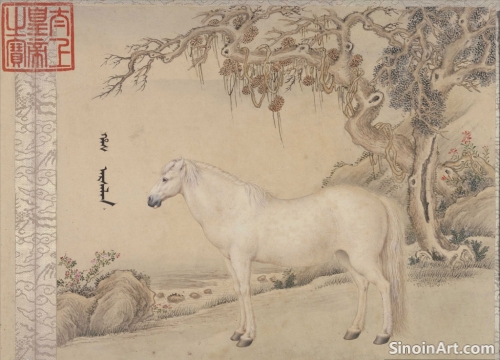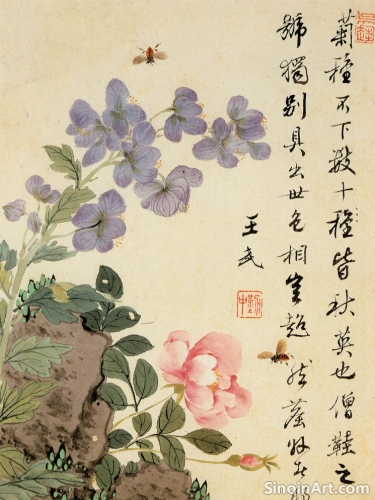Gongbi Painting and the Use of Light and Shadow
|
While traditional Chinese painting often does not prioritize the same chiaroscuro effects as Western art, the skillful use of light and shadow plays a significant role in creating a sense of depth, volume, and atmosphere in Gongbi paintings. Artists use subtle variations in color and value to suggest how light falls on the forms and textures within the work. This subtle use of light and shadow creates a heightened visual impact in the pieces.  The depiction of light and shadow in Gongbi often relies on subtle gradations in color and value. Artists layer thin washes of color to create a sense of depth and volume, with darker areas suggesting shadow and lighter areas representing the highlights. The use of color is carefully layered to create a complex interplay of light and shadow.  The use of specific brushstrokes can also create variations in texture, which helps to heighten the sense of light and shadow. The application of a thick line on one side of an object can suggest it is being cast in shadow. The use of line variations help to communicate how light falls on a specific object.  The treatment of light and shadow in Gongbi painting can also help to convey the mood and atmosphere of the artwork. The way in which light is used can create a sense of peace, tranquility, or drama, depending on the artistic vision. The use of light and shadow can change the way a viewer interprets the mood and meaning of the piece. The use of light and shadow in the art form is used in a way that is both subtle and sophisticated. The artists seek to create a sense of realism and depth, rather than the highly contrasted shadows common in Western art. The subtleties used by Gongbi artists demonstrate their mastery of technique. Ultimately, the skillful use of light and shadow in Gongbi painting elevates the artworks from simple representations of the world to more complex visual narratives, enhancing their sense of realism and emotional impact. The use of light and shadow enriches the visual experience of the work. |
Tag : Light and shadow art, chiaroscuro, Gongbi shading, visual depth, tonal variations
Related information
- Gongbi and the Art of Botanical Illustration
- The Future of Gongbi: Innovation and Tradition
- The Enduring Legacy of Gongbi Painting: Tradition and Innovation
- The Materials of Gongbi: A Closer Look at Tools and Pigments
- Preserving Gongbi: The Importance of Education and Practice
This article explores the relationship between Gongbi painting and botanical illustration, highlighting the meticulous detail, precise linework, accurate color layering, and how these techniques contribute to both artistic beauty and scientific accuracy in the depiction of plants.
A look at the future of Gongbi painting, focusing on innovation, technology, and the importance of preserving traditional skills.
Gongbi painting, rooted in the rich artistic traditions of imperial China, has proven to be an enduring and highly versatile art form, adapting and evolving across generations while maintaining its core principles of precision, detail, and symbolic depth. The long history of Gongbi painting continues to be influential on modern art and the appreciation of traditional techniques.
This article provides a detailed overview of the materials used in Gongbi painting, including rice paper, Chinese brushes, inksticks, and natural mineral pigments, emphasizing the importance of these traditional elements to the art form.
Emphasizes the importance of education and practice for preserving the techniques and traditions of Gongbi painting, advocating for community support and the passing down of skills.